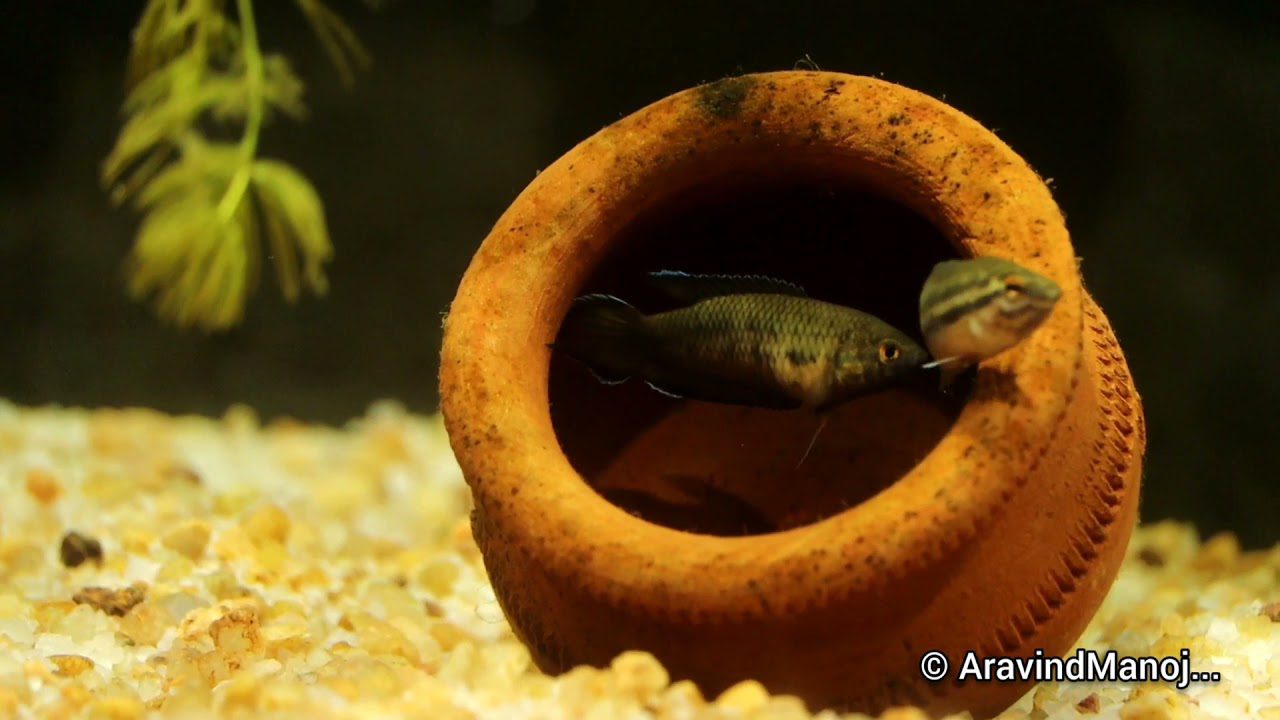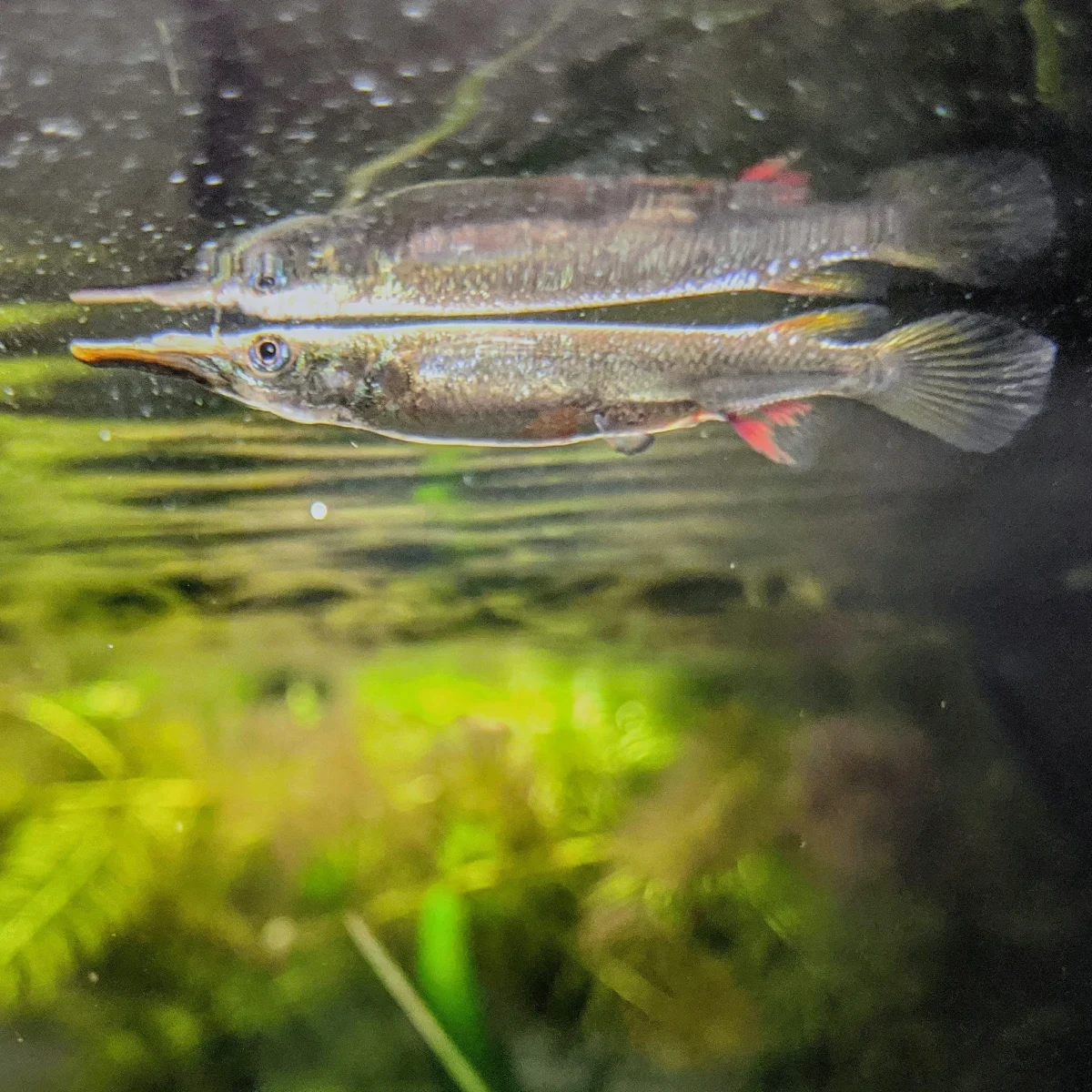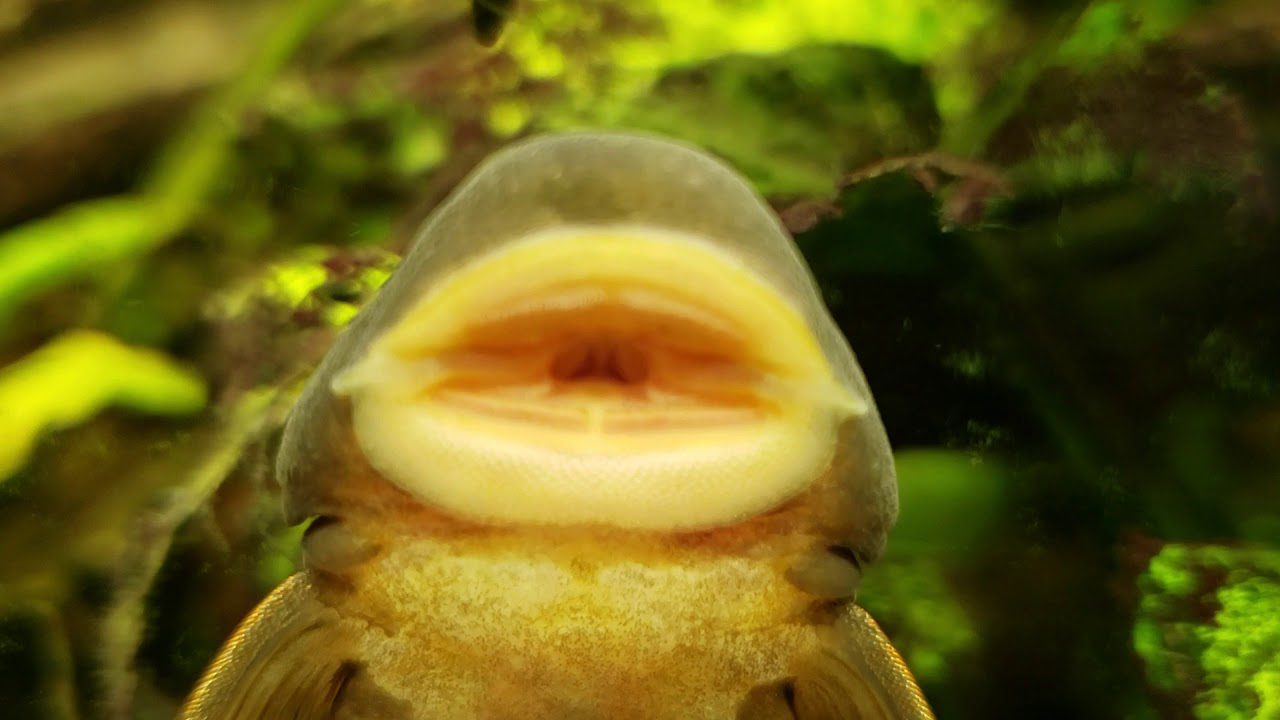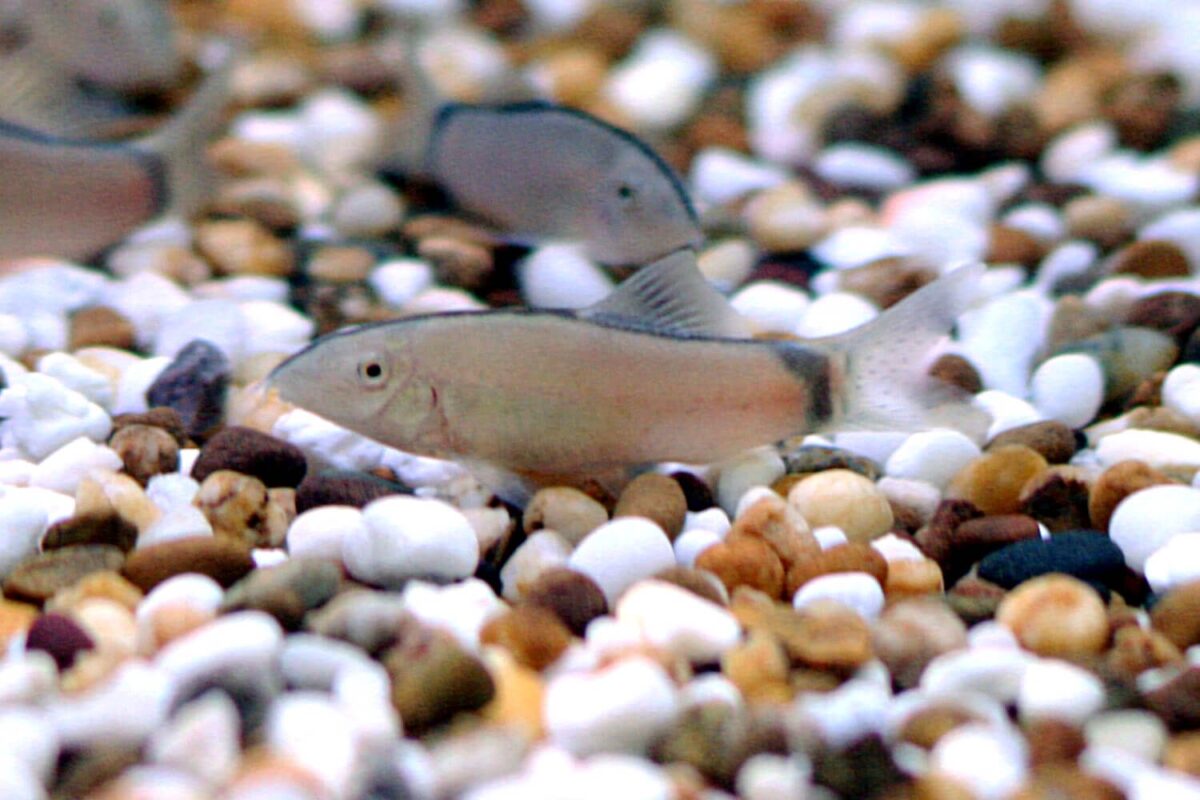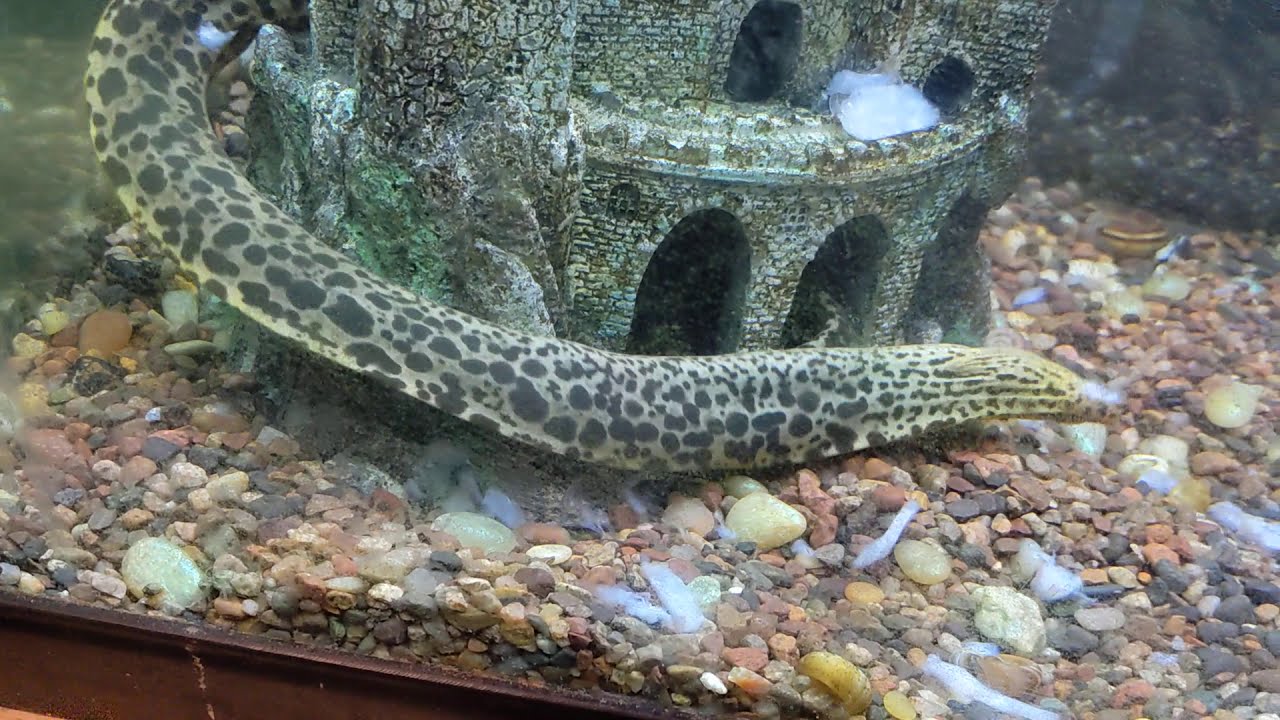The Brown Spike-tailed Paradise Fish, scientifically known as Pseudosphromenus dayi, is a popular tropical fish species among freshwater aquarium enthusiasts. Native to the coastal drainages of the Western Ghats mountains in southern India, this small and timid fish showcases unique physical characteristics and fascinating behaviour. This comprehensive care guide will delve into the taxonomy, natural habitat, physical description, aquarium requirements, care, diet, breeding habits, and habitat maintenance of the Brown Spike-tailed Paradise Fish.
Key Takeaways:
- The Brown Spike-tailed Paradise Fish, also known as Pseudosphromenus dayi, is a tropical fish species.
- It is native to the coastal drainages of the Western Ghats mountains in southern India.
- The species showcases unique physical characteristics and exciting behaviour.
- Proper care, tank setup, and feeding requirements are crucial for maintaining the well-being of these fish.
- Understanding the breeding habits and habitat maintenance of the Brown Spike-tailed Paradise Fish is essential for successful aquarium keeping.
Brown Spike-tailed Paradise Fish – Introduction
In this section, we will explore the taxonomy and classification of the Brown Spike-tailed Paradise Fish and its natural habitat and distribution. Understanding these aspects is crucial for creating an ideal environment for these fish in a home aquarium.
Taxonomy and Classification
The Brown Spike-tailed paradisefish belongs to the family Osphronemidae and the genus Pseudosphromenus. It was first described in 1908 and is commonly known as the Spike-Tailed Gourami. This classification helps identify the unique characteristics and behaviours of this species.
Natural Habitat and Distribution
The Brown Spike-tailed Paradise Fish is endemic to the coastal lowlands of the Coromandel coastline in southeast India and the coast region of west Malaya. It can be found in various freshwater environments, including rice paddies, swamps, lakes, ditches, weedy ponds, and floodplains. Recreating its natural habitat is essential for the well-being and thriving of these fish in a home aquarium.
By understanding the taxonomy, classification, natural habitat, and distribution of the Brown Spike-tailed Paradise Fish, aquarium enthusiasts can create an environment that closely resembles its natural habitat, promoting overall health and happiness.
Physical Description and Characteristics
The Brown Spike-tailed Paradise Fish (Pseudosphromenus dayi) is a small species with an elongated body that typically reaches a maximum size of 7.5 cm. Its unique physical appearance makes it a popular choice among tropical fish enthusiasts.
Colours and Markings
The Brown Spike-tailed Paradise Fish is characterized by a light brown body with two dark, irregular stripes along the sides. The anal, dorsal, and caudal fins exhibit a brownish-red hue with an iridescent light blue edge, while the ventral fins feature a vivid red colouration with iridescent blue tips.
Gender Differences
Male Brown Spike-tailed Paradise Fish display more vibrant colours and larger body sizes than females. This sexual dimorphism is a notable characteristic of the species.
Varieties
Due to breeding efforts, different varieties of the Brown Spike-tailed Paradise Fish may exist. These varieties may have slight variations in colouration and pattern.
Grades
Grading refers to the quality and characteristics of individual fish within a particular variety. Different grades may be assigned based on colour intensity, pattern clarity, and overall appearance.
Behaviour and Temperament
The Brown Spike-tailed Paradise Fish is relatively peaceful and can be kept in community tanks. However, they may display interesting behaviours when maintained in groups. To ensure a harmonious environment for these fish, it is important to provide ample space and suitable tank mates.
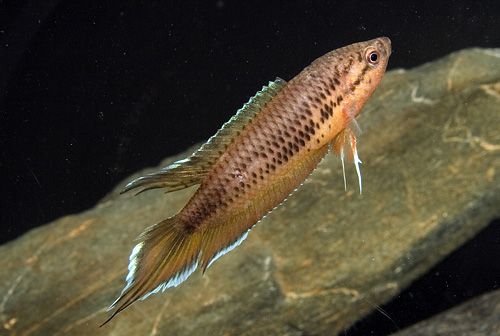
Aquarium Requirements
Ideal Tank Size and Layout
Providing the right aquarium environment is crucial for the well-being of Brown Spike-tailed Paradise Fish. These fish require a tank size of at least 20 gallons to ensure they have enough space to swim and thrive. A spacious tank allows for better water circulation and reduces the chances of overcrowding, which can lead to stress and potential health issues.
The layout of the tank is also essential. Brown Spike-tailed Paradise Fish prefer a fully decorated aquarium with ample hiding places. Incorporating driftwood, roots, branches, and cave-like structures creates a natural and stimulating environment for the fish. These features provide shelter and serve as territories for the fish to establish their dominance.
Water Parameters
Maintaining suitable water parameters is crucial for the health and well-being of Brown Spike-tailed Paradise Fish. The ideal pH level for their aquarium is between 6.0 and 7.5, replicating their natural freshwater habitat. The water’s general hardness (GH) should be in the range of 5-15. The water temperature should be maintained between 75-82°F to provide the perfect tropical environment.
Suitable Tank Mates and Potential Conflicts
When selecting tank mates for Brown Spike-tailed Paradise Fish, it’s essential to choose non-aggressive species with similar water parameter requirements. Good tank mates include non-aggressive Cyprinids, Tetras, smaller Loaches, and Corydoras Catfish. However, it’s important to avoid keeping them with aggressive or larger species that may threaten their well-being.
Compatibility with Live Plants and Invertebrates
Brown Spike-tailed Paradise Fish are generally compatible with live plants in the aquarium. Live plants provide aesthetic appeal and serve as hiding places and natural filtration systems. Some suitable live plants for their aquarium include Anubias, Java Fern, Amazon Sword, and Vallisneria. However, it’s essential to choose plants that can withstand the fish’s water parameters and grazing habits.
Invertebrates: It’s essential to consider the safety of both the fish and the invertebrates. Choosing peaceful, small invertebrates like Cherry Shrimp or Nerite Snails can significantly enhance the tank and help balance the ecosystem.
Brown Spike-tailed Paradise Fish – Care
Diseases
Proper care is essential to ensure the health and longevity of the Brown Spike-tailed Paradise Fish. They are generally hardy and not prone to specific diseases if provided with suitable tank conditions and a balanced diet. However, they can be susceptible to common freshwater fish diseases such as Ich, fin rot, and fungal infections. Monitoring water parameters, appropriate filtration, regular water changes, and a nutritious diet can help prevent diseases and maintain optimal health.
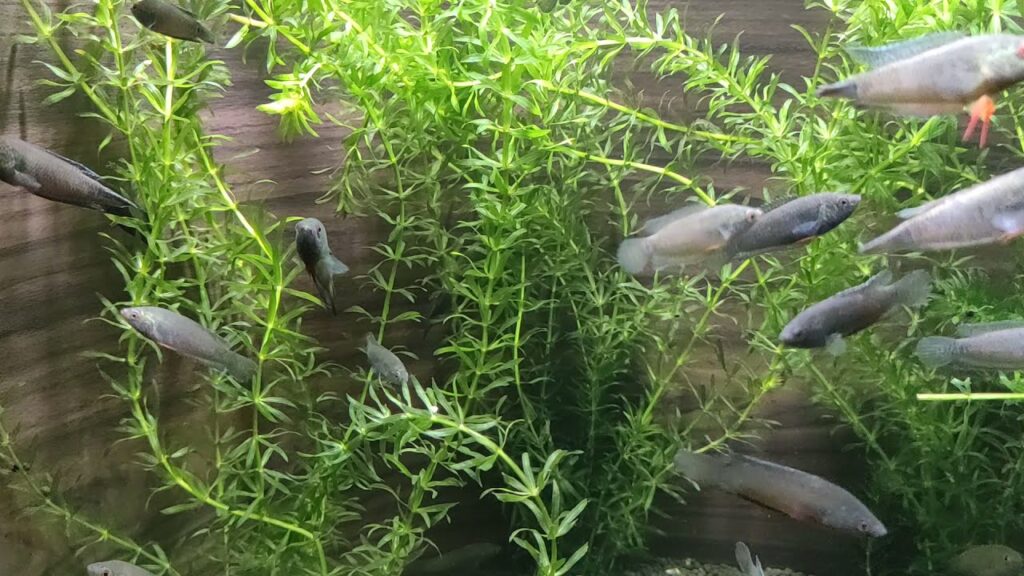
Diet and Feeding
The Brown Spike-tailed Paradise Fish is an omnivorous species that prefers protein-rich foods. In the wild, they primarily consume zooplankton and insect larvae.
In captivity, providing a varied diet that includes small frozen and live foods such as grindal worms, white worms, artemia, and daphnia is crucial. Dried foods may be explored but should not be the primary source of nutrition.
Feeding should be done twice a day, and it is vital to ensure a balanced and nutritious diet by supplementing with small insects and offering food rich in essential nutrients.
Breeding and Reproduction
Sexing
Sexing the Brown Spike-tailed Paradise Fish is relatively easy by observing their size, colouration, and fin shape. Males typically display more vibrant colours and have larger bodies compared to females. This sexual dimorphism helps identify the genders for successful breeding.
Breeding Behavior and Conditions
The Brown Spike-tailed Paradise Fish’s breeding behaviour involves nest-building, wrapping, and egg collection. The male is responsible for caring for the eggs and fry, while the female is no longer involved in parental duties. To encourage breeding, it is essential to provide suitable tank conditions, including appropriate water parameters, adequate hiding places, and compatible tank mates.
Care of Eggs and Fry
Once the eggs are laid and fertilized, the male guards and tends to them until they hatch. To ensure the survival and growth of the fry, it is crucial to maintain stable water conditions and provide a suitable diet. To care for the eggs and fry effectively, it is recommended that they be transferred to a separate rearing tank with green water and provided with specialized feed such as infusoria, baby brine shrimp, or micro worms.
Challenges in Breeding in Captivity
Breeding the Brown Spike-tailed Paradise Fish in captivity can present several challenges. Rearing the fry requires specific conditions and specialized feeding regimes, which may require additional effort and resources.
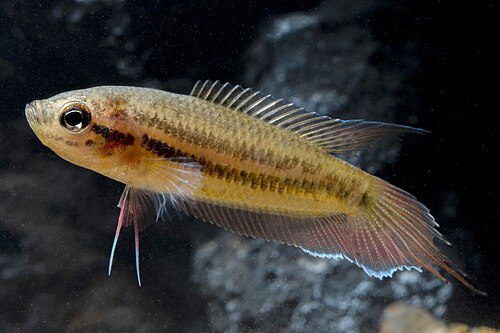
Additionally, achieving successful breeding outcomes may depend on factors such as the compatibility of the breeding pair, water quality, and the overall health and condition of the fish. Careful monitoring and attention to the needs of the fish are necessary to overcome these challenges and increase the chances of successful breeding.
Summary
The Brown Spike-tailed Paradise Fish, also known as Pseudosphromenus dayi, is a fascinating and unique species that requires specific care to thrive in a home aquarium. These small and timid fish are native to the coastal drainages of the Western Ghats mountains in southern India and are popular among tropical fish enthusiasts.
When keeping Brown Spike-tailed Paradise Fish, it is crucial to recreate their natural habitat and provide suitable tank conditions. They prefer a tank size of at least 20 gallons with a fully decorated layout featuring driftwood, roots, branches, and cave-like structures for hiding. A pH of 6.0-7.5, GH of 5-15, and a temperature range of 75-82°F are ideal water parameters.
These fish are omnivorous and prefer protein-rich foods. A varied diet that includes small frozen and live foods such as grindal worms, white worms, artemia, and daphnia is recommended. Feeding should be done twice daily to ensure a balanced and nutritious diet.
Breeding the Brown Spike-tailed Paradise Fish can be a rewarding experience, but it requires careful monitoring and attention to the fish’s needs. Males and females can easily be distinguished by size, colouration, and fin shape. Successful breeding involves nest-building, wrapping, and egg collection, with the male caring for the eggs and fry. Rearing the fry can be challenging and requires specialized conditions and feeding.
Following the guidelines outlined in this care guide, aquarium hobbyists can successfully keep and enjoy the beauty of the Brown Spike-tailed Paradise Fish in their freshwater aquarium.

